I am often asked when chicks can stop using a heat source and move from the brooder to the chicken coop. The short answer is…it depends. Many factors play a role in determining when the time is right to move chicks from the brooder to the chicken coop and we’ll take a look at them here. In the heat of summer, chicks may require supplemental heat for only a few weeks, in very cold weather, chicks may need supplemental heat for much longer.
I have learned more about chick comfort from observing mother hens with their chicks than I have from anything I have ever read. The first few days after hatching, chicks spend most of their time underneath the mother hen, venturing out occasionally to explore, eat and drink. When they get chilly, they simply return to the hen for warmth. Before long, they spend more time away from her than underneath her. My Silkie, Freida, often begins to distance herself completely from her chicks at approximately five weeks old. Six weeks is a good age to begin assessing whether chicks are ready to leave the brooder for the coop. The following factors also play a role in the determination.
AGE/FEATHERING
In general, most chicks are fully-feathered by 6 weeks of age. That means that their chick down is gone and they have grown real feathers, which allow them to regulate their body temperatures. Not all breeds or individual chickens will be fully feathered at the same age, the actual feathering should be considered, not merely the age of the chick.
TEMPERATURES/TIME OF YEAR
“The Formula:” is what I call the usual temperature guidelines commonly suggested for day old chicks. The Formula holds that brooder temperatures should be kept between 90-95° F for the first week after hatching, and reduced by five degrees each week thereafter until the brooder temperature equals the ambient room temperature.
The Formula
Week 1= 90-95°F
Week 2= 85°F
Week 3= 80° F
Week 4= 75° F
Week 5= 70° F
Week 6=65°F
The Formula is a general guideline; the behavior of chicks is a much better indicator of their actual comfort level. The truth about The Formula is that while 90°F is critical in the first week, chicks do not need as much constant heat as heat lamps deliver for as long as it is ordinarily recommended. When chicks are observed spending very little time near the heat source, it can ordinarily be eliminated.
Ideally, chicks will not require a heat source when moving from brooder to coop. If the temperatures outside remain above 65°F and the chicks are at least 6 weeks old, they can move into the coop without supplemental heat. Watch and listen to the chickens. Noisy birds are unhappy, but there’s a difference between the sounds of a cold chick and a chick frightened by a new environment. Once teenage chickens become familiar with a new residence, they should be actively exploring, busily eating and scratching and contently quiet. If they’re huddled together and noisy, they’re probably cold.
COOP CONSIDERATIONS
If a heat source is required, is there electricity to the coop and if so, can heat be safely supplied? If not, the move should wait until outside temperatures are warmer.
Is the coop predator proof? Chicks need to be protected from predators getting into the coop as well as from escaping from the safety of the coop themselves. Hardware cloth should be used to keep predators out and chicks in the coop.
NUMBER OF CHICKS
Each chick generates body heat and the more chicks there are, the better able they are to keep each other warm when necessary.
OLDER FLOCK MEMBERS
If older flock members are already living in the coop, it’s best to wait until the chicks are closer in size to the mature birds before beginning the process of integration into the flock. Smaller birds can be seriously hurt by normal pecking-order behavior from older, bigger birds.
STRESS OF THE MOVE
Transition from one housing unit to another is extremely stressful for chickens of all ages. The behavioral problems that can result from this stress can be managed when knowing what to expect.
1. Instill the Concept of Home
When chicks are moved, they will be confused and will require time to acclimate to the coop. They need time to adjust to the idea that the coop is their permanent home and the place to which they should return at night. For this reason, I recommend keeping them inside the coop for several weeks prior to allowing them access to the run.
Chicks that are not given this initial time to decompress often fail to return to the safety of the coop at dusk independently, which can be frustrating for the chicken-keeper and dangerous for the birds. While it is possible to “coop train” older birds, it’s better to do it at the time of the big move.
2. Deny Access to Nest Boxes
Upon arrival in the coop, the initial inclination of stressed chicks is to hide and nest boxes provide a natural refuge for scared chicks. Sleeping chickens are pooping chickens and while the habit of sleeping in nest boxes may not be a problem initially, when they begin egg-laying, it will be. Droppings soil freshly laid eggs and increase the risk of illness from their consumption even if they are washed. Blocking physical access to the nest boxes prior to the move prevents the chicks from getting into the habit of sleeping in them. Avoiding the behavior is much easier than trying to break the habit. By 17-18 weeks of age, the boxes can be opened for business.
If there are laying hens already living in the coop, close the nest boxes off (with cardboard, plywood, etc.) in the afternoon after egg-laying is finished for the day and open them back up first thing in the morning. This allow the layers access to the boxes during the day and prevents slumber parties in the nest boxes at night.
Kathy Shea Mormino
Affectionately known internationally as The Chicken Chick®, Kathy Shea Mormino shares a fun-loving, informative style to raising backyard chickens. …Read on


shop my SPONSORS
I am often asked when chicks can stop using a heat source and move from the brooder to the chicken coop. The short answer is…it depends. Many factors play a role in determining when the time is right to move chicks from the brooder to the chicken coop and we’ll take a look at them here. In the heat of summer, chicks may require supplemental heat for only a few weeks, in very cold weather, chicks may need supplemental heat for much longer.
I have learned more about chick comfort from observing mother hens with their chicks than I have from anything I have ever read. The first few days after hatching, chicks spend most of their time underneath the mother hen, venturing out occasionally to explore, eat and drink. When they get chilly, they simply return to the hen for warmth. Before long, they spend more time away from her than underneath her. My Silkie, Freida, often begins to distance herself completely from her chicks at approximately five weeks old. Six weeks is a good age to begin assessing whether chicks are ready to leave the brooder for the coop. The following factors also play a role in the determination.
AGE/FEATHERING
In general, most chicks are fully-feathered by 6 weeks of age. That means that their chick down is gone and they have grown real feathers, which allow them to regulate their body temperatures. Not all breeds or individual chickens will be fully feathered at the same age, the actual feathering should be considered, not merely the age of the chick.
TEMPERATURES/TIME OF YEAR
“The Formula:” is what I call the usual temperature guidelines commonly suggested for day old chicks. The Formula holds that brooder temperatures should be kept between 90-95° F for the first week after hatching, and reduced by five degrees each week thereafter until the brooder temperature equals the ambient room temperature.
The Formula
Week 1= 90-95°F
Week 2= 85°F
Week 3= 80° F
Week 4= 75° F
Week 5= 70° F
Week 6=65°F
The Formula is a general guideline; the behavior of chicks is a much better indicator of their actual comfort level. The truth about The Formula is that while 90°F is critical in the first week, chicks do not need as much constant heat as heat lamps deliver for as long as it is ordinarily recommended. When chicks are observed spending very little time near the heat source, it can ordinarily be eliminated.
Ideally, chicks will not require a heat source when moving from brooder to coop. If the temperatures outside remain above 65°F and the chicks are at least 6 weeks old, they can move into the coop without supplemental heat. Watch and listen to the chickens. Noisy birds are unhappy, but there’s a difference between the sounds of a cold chick and a chick frightened by a new environment. Once teenage chickens become familiar with a new residence, they should be actively exploring, busily eating and scratching and contently quiet. If they’re huddled together and noisy, they’re probably cold.
COOP CONSIDERATIONS
If a heat source is required, is there electricity to the coop and if so, can heat be safely supplied? If not, the move should wait until outside temperatures are warmer.
Is the coop predator proof? Chicks need to be protected from predators getting into the coop as well as from escaping from the safety of the coop themselves. Hardware cloth should be used to keep predators out and chicks in the coop.
NUMBER OF CHICKS
Each chick generates body heat and the more chicks there are, the better able they are to keep each other warm when necessary.
OLDER FLOCK MEMBERS
If older flock members are already living in the coop, it’s best to wait until the chicks are closer in size to the mature birds before beginning the process of integration into the flock. Smaller birds can be seriously hurt by normal pecking-order behavior from older, bigger birds.
STRESS OF THE MOVE
Transition from one housing unit to another is extremely stressful for chickens of all ages. The behavioral problems that can result from this stress can be managed when knowing what to expect.
1. Instill the Concept of Home
When chicks are moved, they will be confused and will require time to acclimate to the coop. They need time to adjust to the idea that the coop is their permanent home and the place to which they should return at night. For this reason, I recommend keeping them inside the coop for several weeks prior to allowing them access to the run.
Chicks that are not given this initial time to decompress often fail to return to the safety of the coop at dusk independently, which can be frustrating for the chicken-keeper and dangerous for the birds. While it is possible to “coop train” older birds, it’s better to do it at the time of the big move.
2. Deny Access to Nest Boxes
Upon arrival in the coop, the initial inclination of stressed chicks is to hide and nest boxes provide a natural refuge for scared chicks. Sleeping chickens are pooping chickens and while the habit of sleeping in nest boxes may not be a problem initially, when they begin egg-laying, it will be. Droppings soil freshly laid eggs and increase the risk of illness from their consumption even if they are washed. Blocking physical access to the nest boxes prior to the move prevents the chicks from getting into the habit of sleeping in them. Avoiding the behavior is much easier than trying to break the habit. By 17-18 weeks of age, the boxes can be opened for business.
If there are laying hens already living in the coop, close the nest boxes off (with cardboard, plywood, etc.) in the afternoon after egg-laying is finished for the day and open them back up first thing in the morning. This allow the layers access to the boxes during the day and prevents slumber parties in the nest boxes at night.



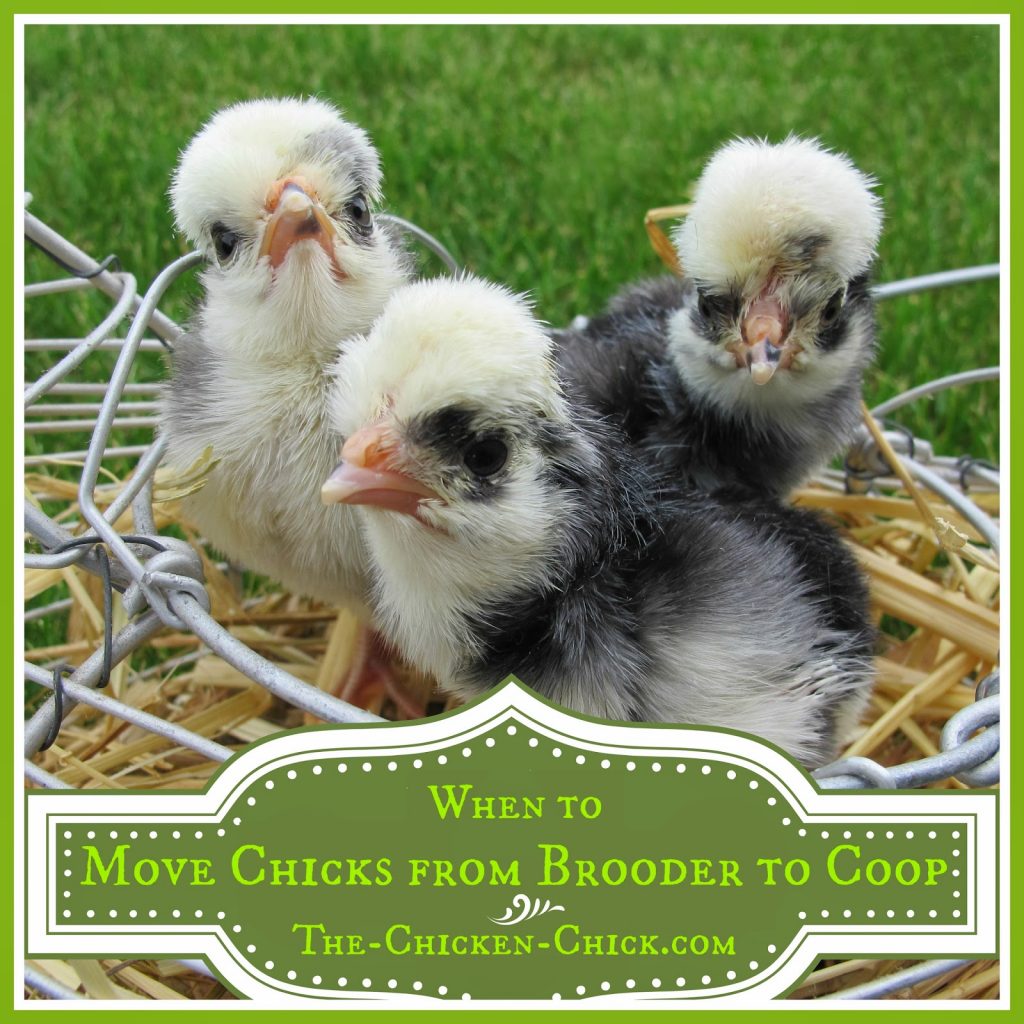
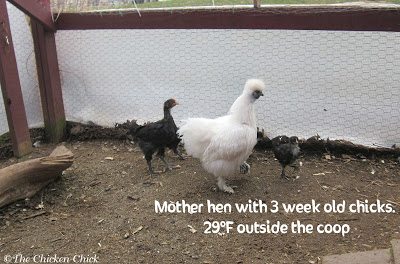
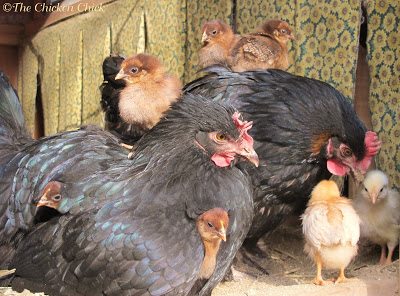

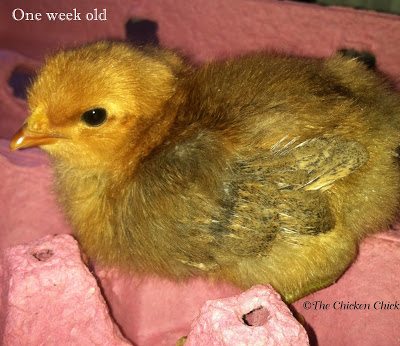
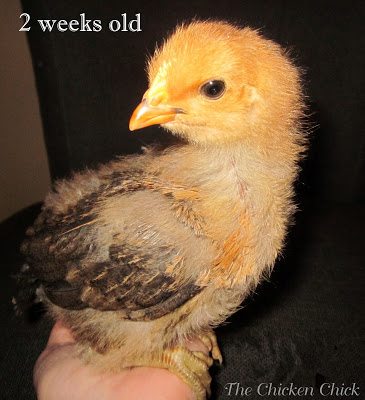
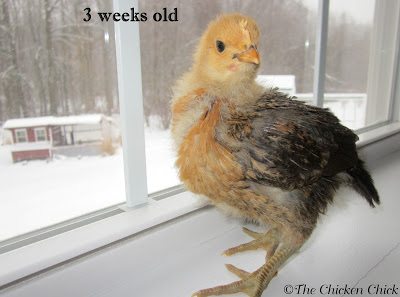
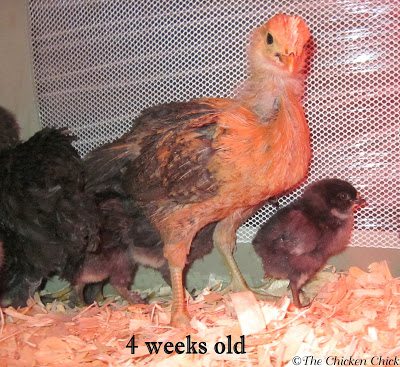

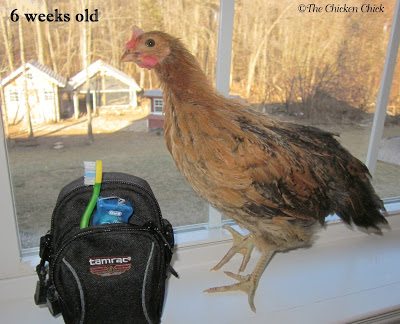
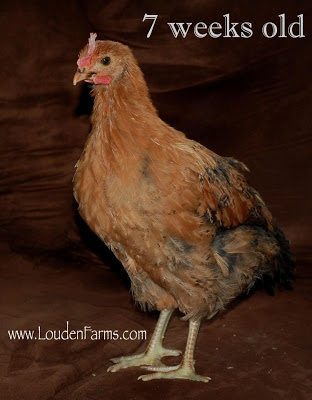
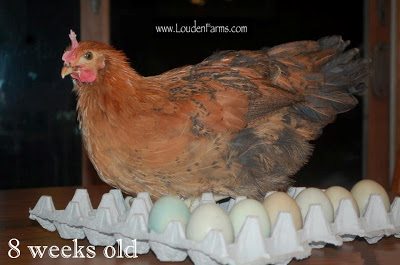
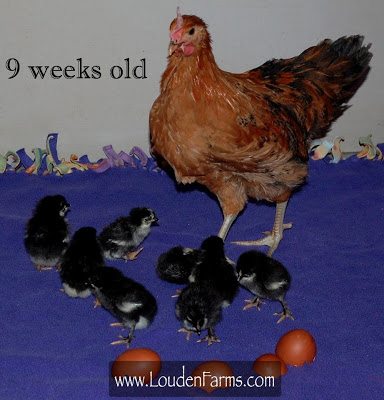
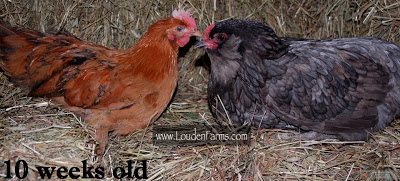
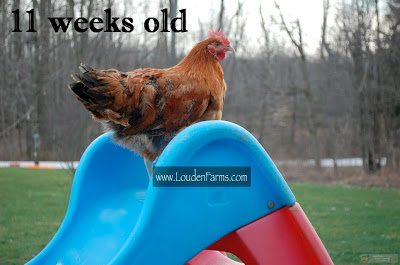
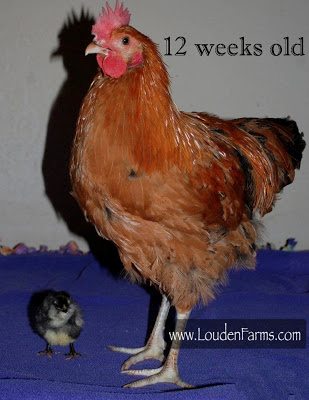
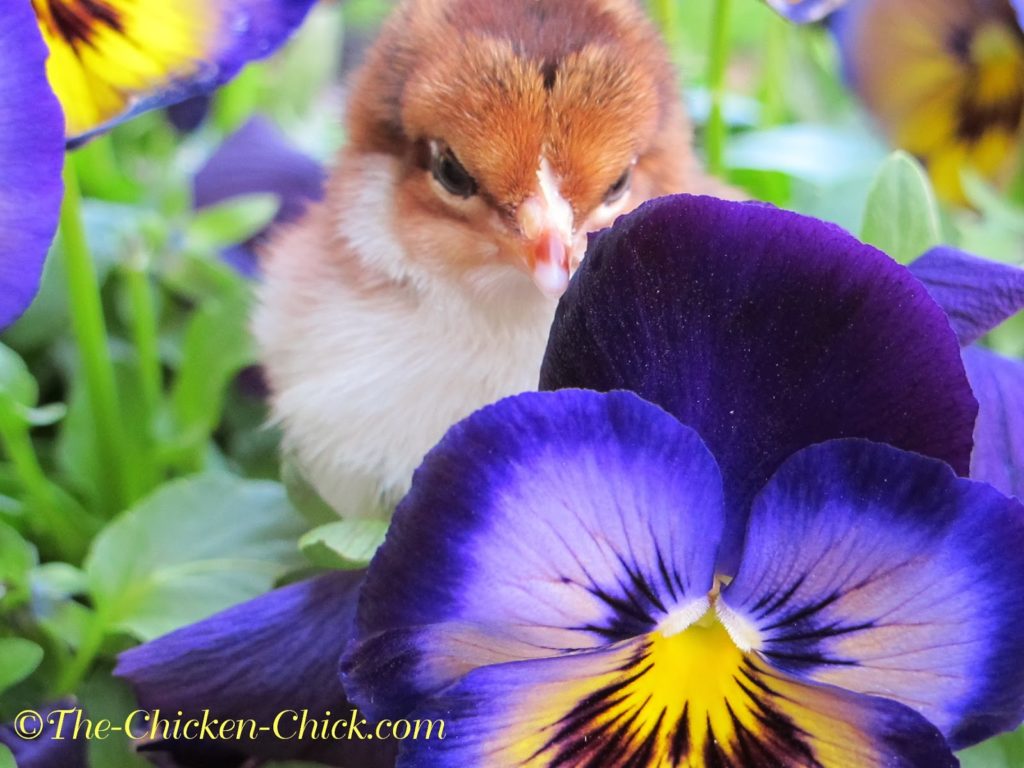
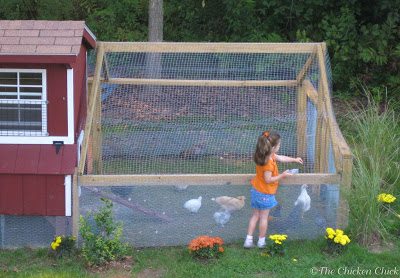

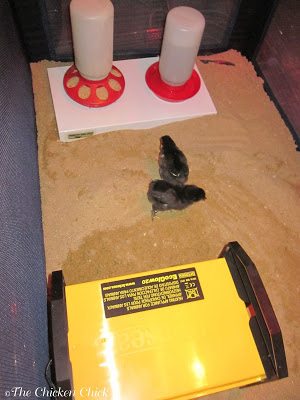
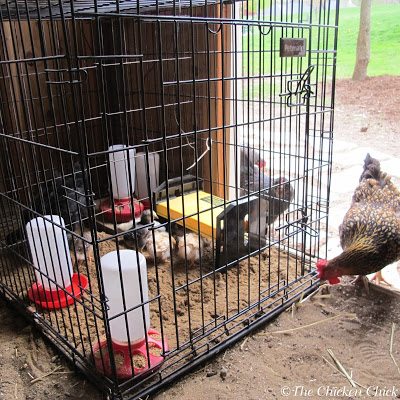
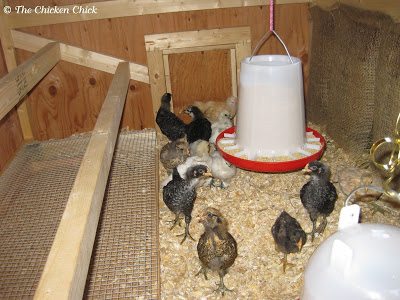
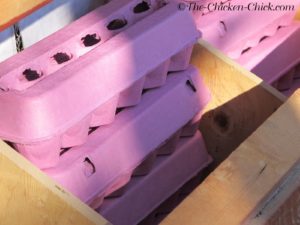






















I notice in one of your photos it looks like you have sand in the brooder… Is this something you recommend? I know you prefer it in the coop and we plan to try that with this round of clean out, but would love to also be able to have it in the brooder!
I prefer shavings in the brooder because most of the time, I’m brooding chicks inside the house, which is not conducive to the use of sand in brooders most times of year.
Hello, I have some Silkies that just turned 21 weeks old. We believe we have at least 2 hens out of the 6, but they all crow! I have heard that hens can crow as well, but I was wondering; If I DO have hens, will they still go broody, even if they think they are roosters??? Also, is it okay if I get day old chicks, raise them ’til they have feathers and are at least 3 weeks old, and then put them into the coop with my Silkies and other chickens, in case a hen goes broody and… Read more »
The crowing birds ARE ROOSTERS.
No, don’t try giving chicks to hens that aren’t already broody. They will kill them.
I already have the cozy coop heat panel and I was wondering if It’s ok to use for chicks. I was going to build a little frame for it to lay on and maybe have it a bit higher than a chick brooder because I believe it is warmer than the brinsea eco one. My chickens don’t seem to use it so I would like to get some use out of it but I also don’t want to risk the chicks being too hot. We are on day 13 of incubation so I have to figure this out fast. I… Read more »
No, it’s not designed for chicks.
I have 12 assorted hen chicks, 4 weeks old. They’ve grown so fast! It’s mid-July in central Maryland and hot and humid. Coop is here and ready. We’ve been taking them out I to the yard a few nights a week. Their brooder is a huge horse trough, they still huddle at night, some under the heat plate, and fly out whenever I remove the chicken wire overhead for constant cleaning. When could I introduce them to construction sand which I will have in the coop? Could I feed them other things besides chicken starter with grit, they seem so… Read more »
Chicks MUST eat all day- that is a chicken’s full-time job. Their digestive tracts are very different from other animals’ and humans’. Do not feed chickens anything other than their bagged chicken feed and you will be certain they are getting everything they need nutritionally in the correct balance to be healthy and grow properly, as well as to lay eggs ultimately.
Hello! Thanks for all this great info. Our chicks are 9 weeks old and we’ve been acclimating them to their run and coop. They’re not using the ramp yet to go up to roost/perch. They just hang out downstairs. It’ll be in the 80’s-90’s next few weeks here. If coop training is out, how can we get them sleeping safely in the coop? Thanks for all you do!
The hard way, unfortunately. You’ll have to corral them into the coop and place them on the roost every night until they do it independently.